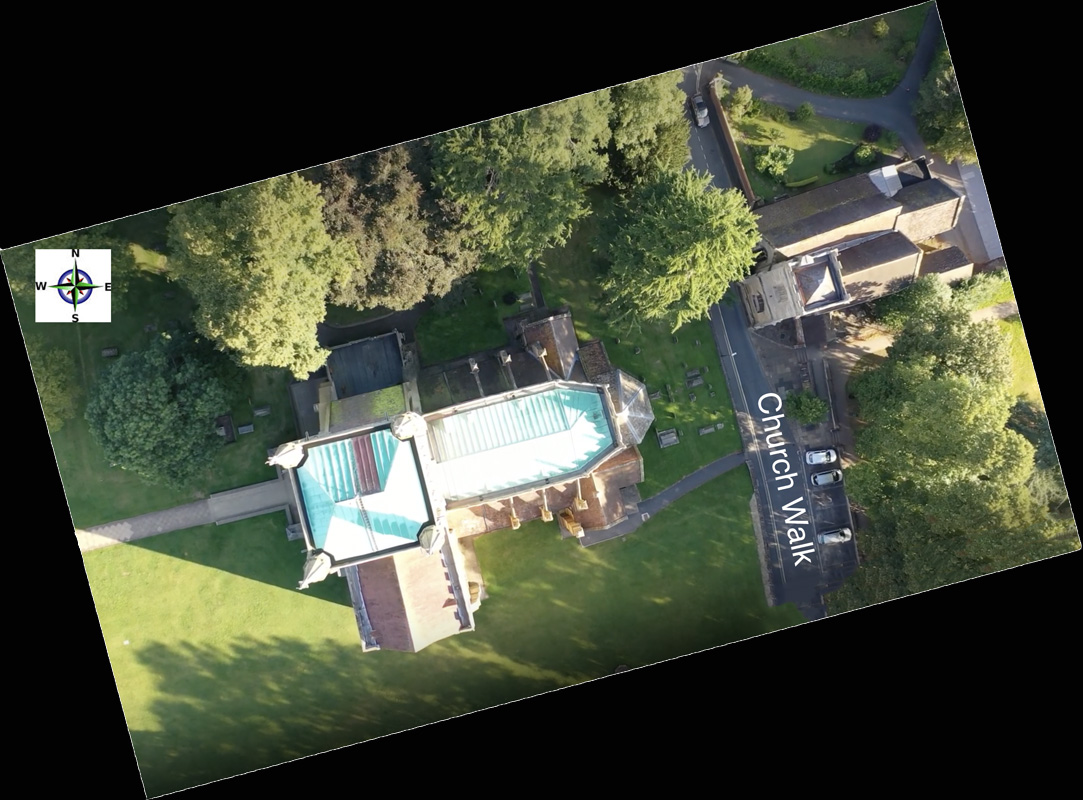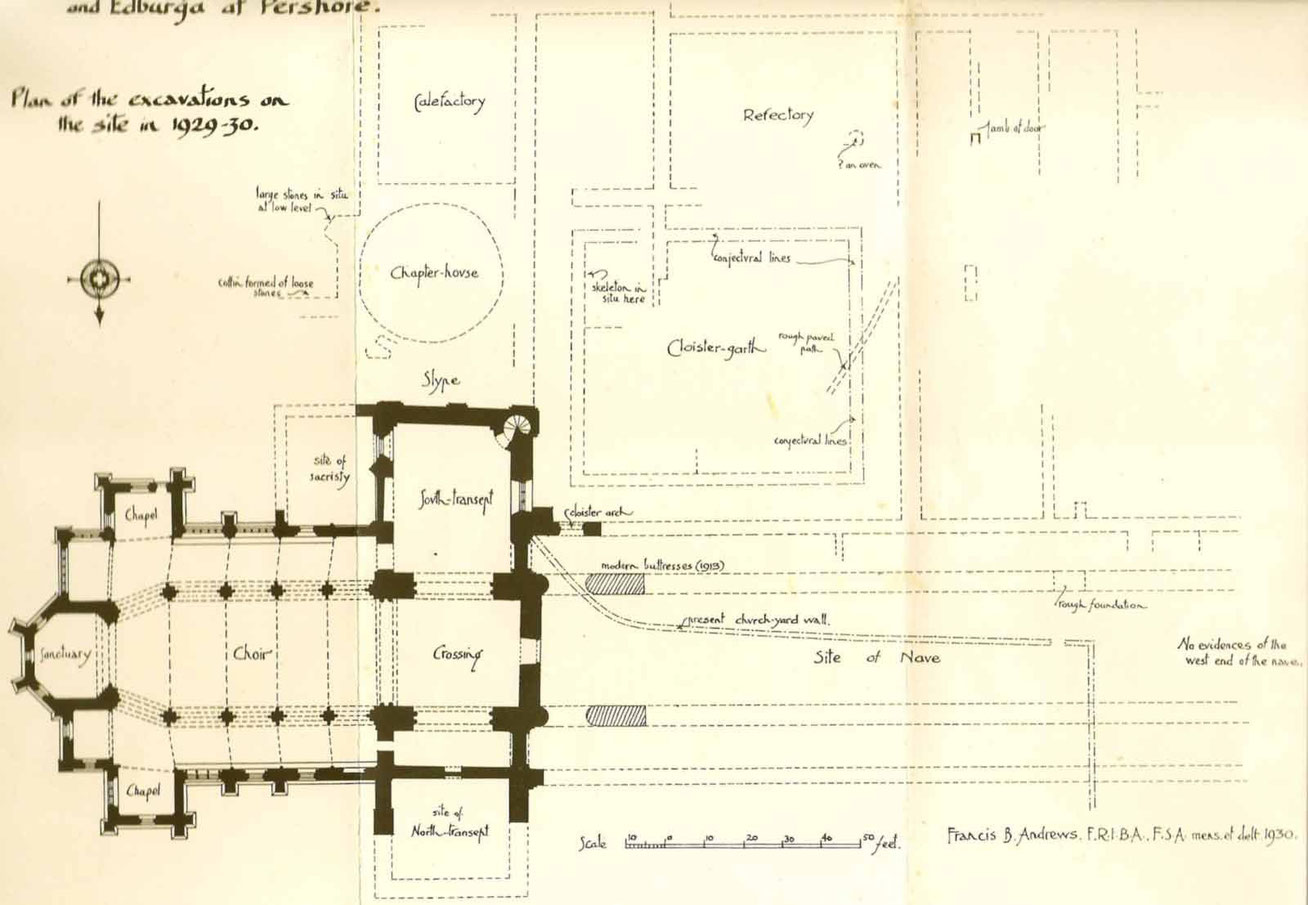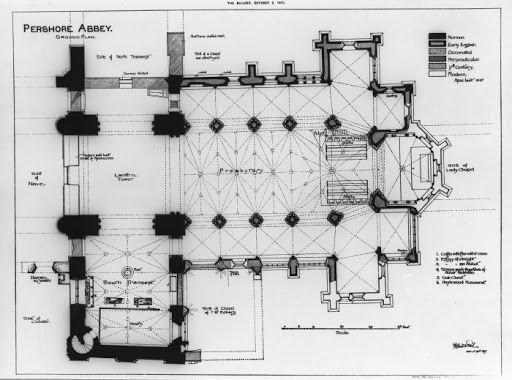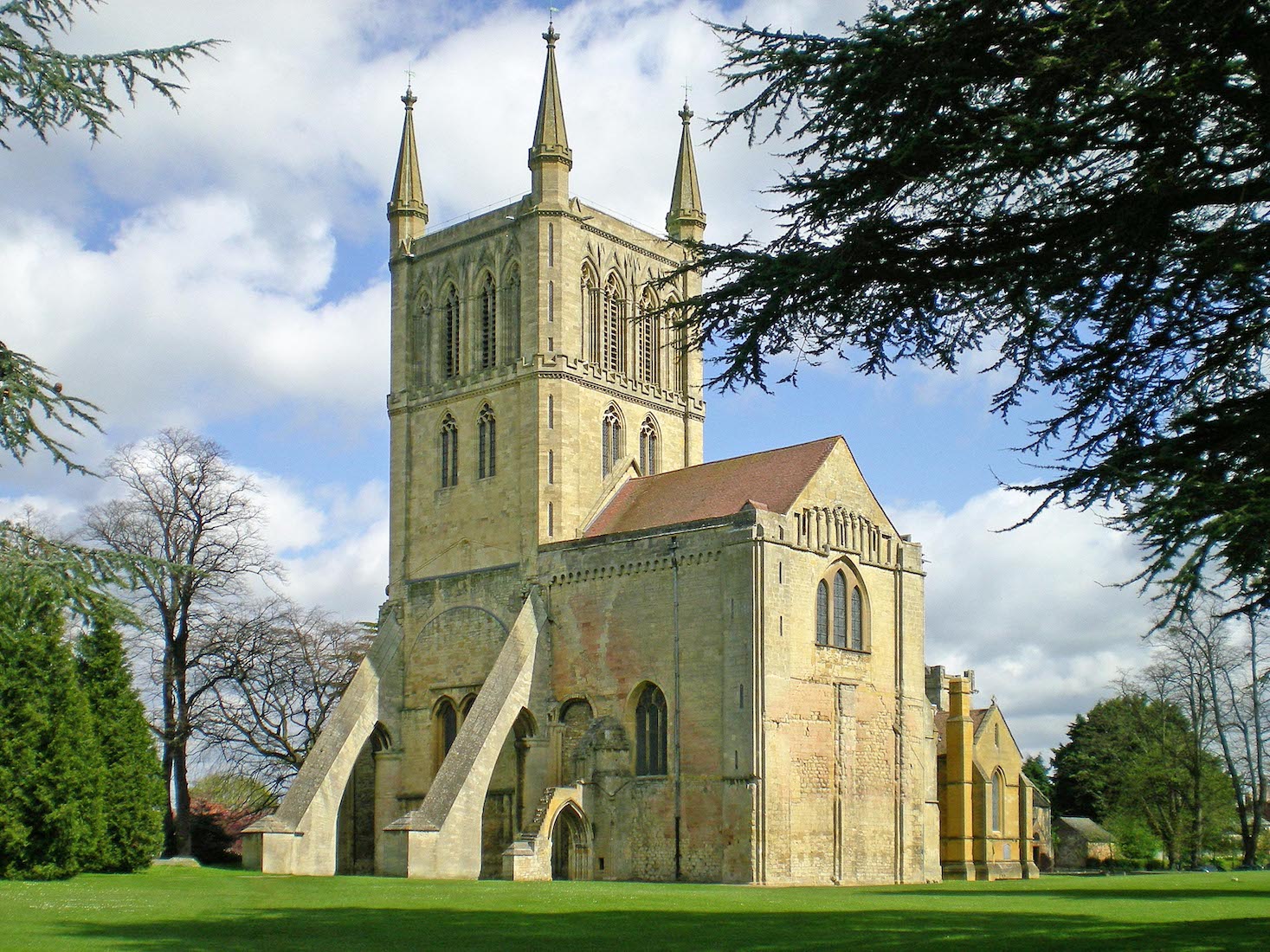The main photographic contributors to this site are Aidan McRae Thomson, ‘Glass Angel’ and Wendy Harris. Smaller numbers of photos have been supplied by Matthew Slade and ‘Jules & Jenny’. Accreditation is given in the text using the initials AMT, GA, WH, MS and J&J. I have been delighted at how ready people have been to let me use their excellent photos. Further details about our contributors are given in the Conclusion. There are also several photos taken from a virtual tour of the Abbey (PA). And there is one photo (#58) where I found the photo but was later unable to trace the source. This is labelled UP (unknown photographer!), and I will gladly remedy this when able. My sincere thanks to all who have taken part in this joint project.
A brief history of this Abbey Church is given below. However, if you want to begin your tour of the Church immediately, tap / click on START . You can also access intermediate points in the tour by a tap / click on the following links:
NOTE ON MAGNIFYING IMAGES
With this website format the images are large enough for most purposes. If there is a need for greater magnification of an image, go to the identical photo on the appropriate Flickr site listed in the Conclusion and download the image as instructed.
SATELLITE VIEW
A very short walk north along Church Walk from the market town of Pershore brings us to Pershore Abbey in a lovely parkland setting. Just across Church Walk, and surprisingly close to the Abbey, is the old St Andrew’s Church – partly blocking the road!
In orientation, the Abbey is not far from having a geographical east-west axis, with the sanctuary facing in an easterly direction. It will therefore cause no confusion for us to identify our liturgical directions (with the sanctuary pointing due East – capital letter) with the geographical directions.



PLAN
The Pershore Abbey (Church) building is an interesting asymmetric remnant of the magnificent Monastery of St Mary and St Edburga which originally stood here. The top plan at left indicates the outlines of the original structure. The source of this plan can be found at
https://www.heritagedetectives.org/the-time-traveller-s-guide/pershore/old-pershore/
The dark outlines indicate the existing Abbey Church – all that remains of the original Abbey.
The second plan shows the Abbey Church as it is today, and can be found at
http://www.artandarchitecture.org.uk/images/full/dbaae941e1de5e0aae96ebb8b0c6cfbc5d8077b3.html
We see that the Western tower (at left) was originally the central tower of the Abbey Church, and the present nave was the chancel (choir). Only the South transept remains of the original main transepts, and there is a minor transept close to the sanctuary (at right). The two parts of the minor transept are no longer used as chapels, but directly adjacent to the sanctuary are the St John’s Chapel (to the North) and the Wick Chapel (to the South). (Wick is now a nearby town, but in 1086 WICK formed part of the abbey of Westminster’s great manor of Pershore.)
In our exploration, we shall first walk right around the Church before entering by the West door (at left). We then climb the tower, using the spiral staircases and corridor beginning at the Southwest corner of the South transept. Returning to ground level we then make our way Eastwards to the sanctuary and finally the Wick Chapel.
HISTORY
Years Built: 681; 1020; 1090–1130
Address: Church Walk, Pershore, Worcestershire
Simon Jenkins Rating: ****
55 Major British Churches: √
Pershore Abbey was one of the largest medieval abbeys in Britain, larger even than Worcester Cathedral. The Abbey was destroyed in the Reformation, but the local residents saved the abbey church from destruction by purchasing it for their own use. The striking lantern tower dates from 1350, while in the interior the round font is beautifully carved. The interior as a whole boasts superb vaulting joined by carved bosses featuring beasts, leaf and foliate head patterns.
Some time around AD 681, King Ethelred of Mercia granted estates at Pershore to Bishop Oswald of Worcester to establish a monastery. The monastic community was living at Pershore by AD 689.
In 972 King Edgar confirmed the Abbey’s charter but shortly afterwards the monks adopted the Benedictine Rule. But all was not plain sailing, for Earl Alfhere seized a large portion of the abbey lands. These lands were much later granted by Edward the Confessor to endow Westminster Abbey.
In 1002 a fire destroyed the Abbey church, forcing a new church to be built by 1020. The first known burial of an important benefactor took place in 1056 when Earl Odda died at Deerhurst monastery and was brought to Pershore for burial. The next major change at Pershore began in 1090 when a new Norman church was begun to replace the Saxon building.
This new Abbey church was completed by 1130 and is the core of the building we see today. From the early years of the 12th century, Pershore claimed to possess the relics of St Eadburh of Winchester, daughter of Ward the Elder, and the relics helped attract pilgrims to the Abbey.
The Abbey was troubled by fires in 1223 and 1288, necessitating major rebuilding. The tower had to be rebuilt, as did the Norman quire.
The Abbey survived until the Reformation and was one of the last major monasteries to be dissolved by Henry VIII. Most of the monastic buildings were pulled down, and the stone sold for building material. The Abbey church would have followed suit, but the parishioners of Pershore came up with 400 pounds to buy the monk’s quire to serve as their parish church.
The North transept collapsed in 1686, so a heavy buttress had to be built to support the tower. Another major rebuilding took place in the Victorian period, supervised by George Gilbert Scott, who removed the belfry floor to expose the traceried panelling that is one of the Abbey’s most beautiful features.
https://www.britainexpress.com/attractions.htm?attraction=1976
A more complete (and much longer!) history can be found at the Wikipedia site:
https://en.wikipedia.org/wiki/Pershore_Abbey



